Pacific Coastline |
||||||||||
 |
 |
|||||||||
Knitted jumper in DROPS Air. The piece is worked top down with European/diagonal shoulders, English rib and split in the sides. Sizes S - XXXL.
DROPS 243-5 |
||||||||||
|
------------------------------------------------------- EXPLANATIONS FOR THE PATTERN: ------------------------------------------------------- GARTER STITCH (worked back and forth): Knit all rows. 1 ridge = knit 2 rows. STRIPES BODY: * 8 rows/rounds with colour wheat, 24 rows/rounds with colour sage green *. Work from *-* until you have 3 stripes with colour wheat. Continue with colour sage green. STRIPES SLEEVES: Work with colour sage green for 5-5-5-7-7-7 cm, then work stripes as follows: * 8 rounds with colour wheat, 24 rounds with colour sage green *. Work from *-* until you have 3 stripes with wheat. Continue with colour sage green. ENGLISH RIB back and forth (front and back pieces): ROW 1 (wrong side): 1 stitch in garter stitch, * 1 yarn over, slip 1 stitch purl-wise, knit 1 *, work from *-* until there are 2 stitches left, 1 yarn over, slip 1 stitch purl-wise, 1 stitch in garter stitch. ROW 2 (right side): 1 stitch in garter stitch, * knit together the yarn over and slipped stitch, 1 yarn over, slip 1 stitch purl-wise *, work from *-* until there are 2 stitches left, knit together the yarn over and slipped stitch, 1 stitch in garter stitch. ROW 3 (wrong side): 1 stitch in garter stitch, * 1 yarn over, slip 1 stitch purl-wise, knit together the yarn over and slipped stitch *, work from *-* until there are 2 stitches left, 1 yarn over, slip 1 stitch purl-wise, 1 stitch in garter stitch. Repeat rows 2 and 3. ENGLISH RIB in the round (body and sleeves): ROUND 1: * Make 1 yarn over, slip 1 stitch as if to purl, knit together the yarn over and slipped stitch *, repeat from *-* to end of round. ROUND 2: * Purl together the yarn over and slipped stitch, make 1 yarn over, slip 1 stitch as if to purl *, repeat from *-* to end of round. Repeat rounds 1 and 2 onwards. INCREASE TIP: Work 3 stitches in the knitted stitch: Knit together the yarn over and stitch but do not slip them from the needle, make 1 yarn over and knit together the stitch and yarn over again, now slip the stitch and yarn over off the left needle = 3 stitches. DECREASE TIP : Decrease mid-under the sleeves in the stitches closest to the purled marker-stitch mid under sleeve. All decreases are on a round where the yarn overs and knitted stitches are knitted together! DECREASE 2 STITCHES TOWARDS THE LEFT (start just after the purled marker-stitch): Slip the first knitted stitch and yarn over onto right needle as if to knit together, knit the next 2 stitches together (1 purled + knitted stitch and yarn over), pass the slipped stitch and yarn-over over the knitted together stitches (= 2 stitches decreased). DECREASE 2 STITCHES TOWARDS THE RIGHT (start 3 stitches + 2 yarn overs before the purled marker-stitch): Slip the first knitted stitch and yarn over onto right needle as if to knit together, purl 1, pass the slipped stitch and yarn-over over the purled stitch, place the stitch back on the left needle, pass the stitch and yarn-over over the replaced stitch, slip the remaining stitch onto the right needle (= 2 stitches decreased). ------------------------------------------------------- START THE PIECE HERE: ------------------------------------------------------- JUMPER – SHORT OVERVIEW OF THE PIECE: The top of the back piece is worked from top down and back and forth with circular needle until the armholes are finished. Stitches are knitted up along the shoulders for the front piece and cast on for the neck. When the armholes are finished on the front piece, the yoke is joined and the body worked in the round with circular needle, then divided for the split and the front and back pieces finished separately, back and forth. Stitches are knitted up around the armholes and the sleeves worked first back and forth, then in the round with short circular needle/double pointed needles. The neck is worked to finish. The piece is worked with English rib and stripes. BACK PIECE: Cast on 27-27-27-27-29-31 stitches with circular needle size 5 mm and colour sage green DROPS Air. Work row 1 of ENGLISH RIB – read description above, this row is worked from the wrong side. Now work as follows from the right side: 1 GARTER STITCH – read description above, 4 stitches in English rib, increase 2 stitches in the next stitch (a knitted stitch which is worked together with the yarn over) - read INCREASE TIP, work English rib until there are 6 stitches left, increase 2 stitches in the next stitch (a knitted stitch which is worked together with the yarn over), work 4 stitches in English rib and 1 garter stitch. Continue the English rib and increase like this every 2nd row from the right side (i.e., every 4th row) a total of 10-11-13-14-15-16 times (4 increased stitches each time). The increased stitches are worked into the English rib. After the final increase there are 67-71-79-83-89-95 stitches. Continue with English rib. After 2 rows of English rib insert 1 marker in each side; the piece is now measured from here. When the piece measures 11-12-12-13-14-14 cm from the marker, work STRIPES BODY – read description above. Continue working until the piece measures 14-15-15-16-17-17 cm from the marker. Cut the strand, place the stitches on a thread or on a stitch holder. FRONT PIECE: Start on the left shoulder (when the garment is worn). Knit up 21-23-27-29-31-33 stitches inside 1 stitch along the shoulder on back piece (1 stitch in each ridge along the shoulder). Work English rib with 1 garter stitch on each side until the piece measures 7 cm. Now increase for the neck as described under INCREASE TIP, at the beginning of every other row from the right side, inside 5 stitches (1 edge stitch + 4 English rib stitches). Increase 2 stitches every other row from the right side 3 times = 27-29-33-35-37-39 stitches. Work 1 row from the wrong side, cut the strand and put stitches on a thread. Work now right shoulder as explained below. Knit up 21-23-27-29-31-33 stitches inside 1 stitch along the right shoulder on the back piece. Work English rib for 7 cm. Now increase for the neck as described under INCREASE TIP, at the end of every other row from the right side, inside 5 stitches (1 edge stitch + 4 English rib stitches). Increase 2 stitches every other row from the right side 3 times = 27-29-33-35-37-39 stitches. After last increase work 1 row from the wrong side. Work as follows from the right side: English rib as before over the 27-29-33-35-37-39 stitches from the right front piece, cast on 13-13-13-13-15-17 stitches for the neck, English rib as before over the 27-29-33-35-37-39 stitches from the left front piece = 67-71-79-83-89-95 stitches. Work English rib back and forth with 1 edge stitch in garter stitch on each side. When the piece measures 21-22-24-25-26-28 cm, begin STRIPES BODY. Continue until the piece measures 24-25-27-28-29-31 cm. Now join the front and back pieces as described below. BODY: Work the 67-71-79-83-89-95 stitches from the front piece, cast on 3-3-3-7-7-11 stitches (= side), work the 67-71-79-83-89-95 stitches from the back piece, cast on 3-3-3-7-7-11 stitches = 140-148-164-180-192-212 stitches. Continue with ENGLISH RIB in the round over all stitches and the stripes as before – read explanations above. Start the round in the middle of the cast-on stitches in the side. Work until the piece measures 46-48-50-52-54-56 cm, measured from the top of the shoulder. Work next round as follows – adjust to a round where the yarn overs are worked together with the knitted stitches, cast off the middle stitch of the 3-3-3-7-7-11 new stitches in the side (first stitch on the round), work 2 garter stitches, then work as follows over the next 65-69-77-85-91-101 English rib stitches: work the yarn over and knitted stitch together as normal, make 1 yarn over, purl 1 (2 English rib stitches become ‘knit 1, purl 2’), work 2 garter stitches, cast off the next stitch (middle stitch of the 3-3-3-7-7-11 new stitches in the side), work 2 garter stitches, as follows over the next 65-69-77-85-91-101 English rib stitches: work the yarn over and knitted stitch together as normal, make 1 yarn over, purl 1 (2 English rib stitches become ‘knit 1, purl 2’), work 2 garter stitches = 101-107-119-131-140-155 stitches. Turn and work the back piece as follows: Change to circular needle size 4 mm. Work 2 garter stitches, * purl 1, knit 2 *, work from *-* and finish with purl 1 and 2 garter stitches. Continue this rib for 10 cm. Cast off. FRONT PIECE: Place the stitches from the front piece on circular needle size 4 mm and work as follows from the wrong side: 2 garter stitches, * purl 1, knit 2 *, work from *-* and finish with purl 1 and 2 garter stitches. Continue this rib for 10 cm. Cast off. The jumper measures approx. 56-58-60-62-64-66 cm, from the top of the shoulder. LEFT SLEEVE: Using circular needle size 5 mm, knit up from the right side 34-36-38-40-40-44 stitches from the bottom of the armhole up the front piece to the shoulder and 21-21-21-23-25-25 stitches from the shoulder down the back piece = 55-57-59-63-65-69 stitches round the armhole. Work English rib back and forth with 1 garter stitch on each side, until the sleeve measures 1-1-1-3-3-4 cm. Now join the sleeve on short circular needle/double pointed needles and finish the sleeve in the round. When joining the sleeve, work the garter stitches on each side together to 1 stitch, which is continued as a purled stitch in the English rib. Insert 1 marker-thread in this stitch (mid-under sleeve) = 54-56-58-62-64-68 stitches. Allow the thread to follow your work onwards. The sleeve is measured from here. Start the round at the marker-thread and work English rib. Work STRIPES SLEEVES – read description above. When the sleeve measures 3-3-3-4-5-5 cm, decrease 4 stitches mid-under the sleeve – read DECREASE TIP. Decrease like this every 10-10-10-8-8-8 cm a total of 4 times = 38-40-42-46-48-52 stitches. Continue working until the sleeve measures 40-40-38-38-36-35 cm. Approx. 10 cm left; try the jumper on and work to desired length, with the next round a round where yarn overs are worked together with the knitted stitches. Work 1 round as follows: work the yarn over and knitted stitch together as normal, make 1 yarn over, purl 1 (2 English rib stitches become ‘knit 1, purl 2’) = 57-60-63-69-72-78 stitches. Change to double pointed needles size 4 mm. Work rib (knit 1, purl 2) for 10 cm. Cast off a little loosely. The sleeve measures approx. 50-50-48-48-46-45 cm from the marker. RIGHT SLEEVE: Work in the same way as the left sleeve but knit up 21-21-21-23-25-25 stitches from the bottom of the armhole, up the back piece to the shoulder and 34-36-38-40-40-44 stitches from the shoulder down the front piece. Sew the bottom of the armholes – see sketch. NECK: Start on one shoulder and knit up from the right side, inside 1 edge stitch, 84 to 92 stitches with short circular needle size 4 mm and colour sage green. Stitch count must be divisible by 2. NOTE! Knit up 1 stitch in each purled stitch. Work rib (knit 1, purl 1), making sure the rib matches the English rib. Work rib in the round for 9 cm. Cast off. |
||||||||||
Diagram explanations |
||||||||||
|
||||||||||

|
||||||||||
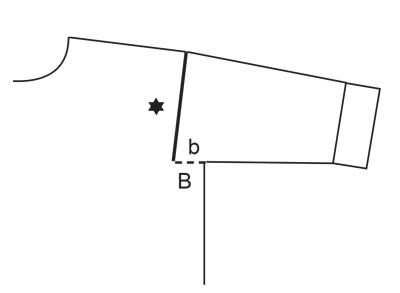
|
||||||||||
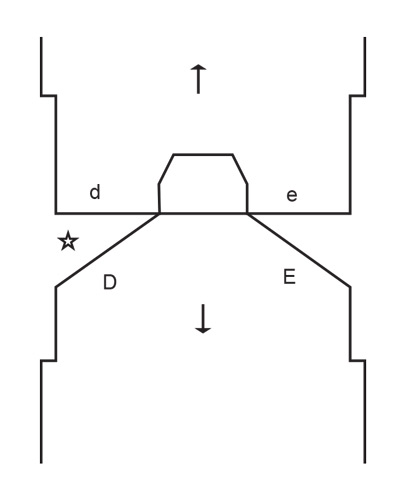
|
||||||||||
|
Have you made this or any other of our designs? Tag your pictures in social media with #dropsdesign so we can see them! Do you need help with this pattern?You'll find tutorial videos, a Comments/Questions area and more by visiting the pattern on garnstudio.com. © 1982-2024 DROPS Design A/S. We reserve all rights. This document, including all its sub-sections, has copyrights. Read more about what you can do with our patterns at the bottom of each pattern on our site. |
||||||||||







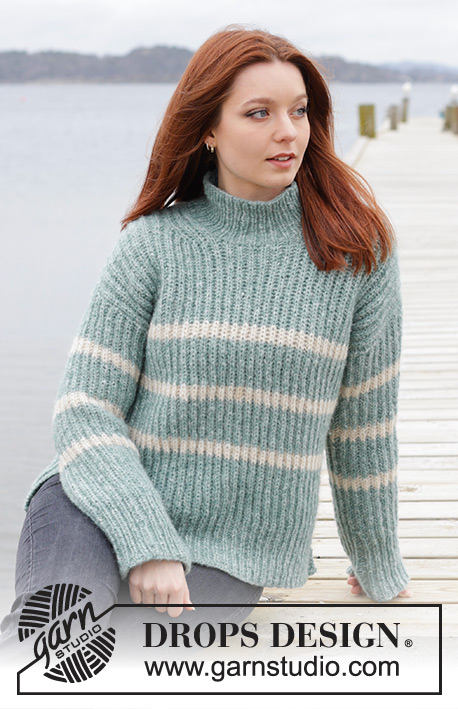




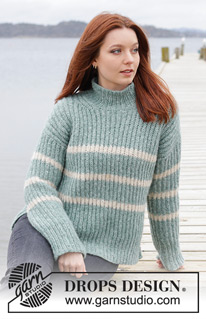
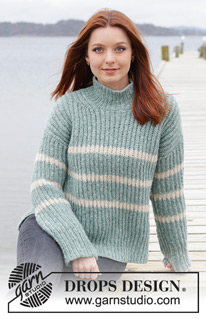
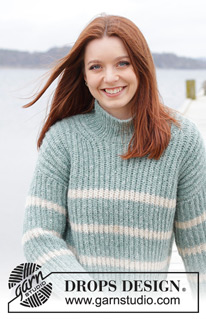











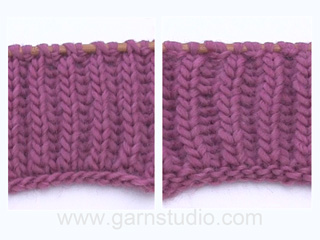

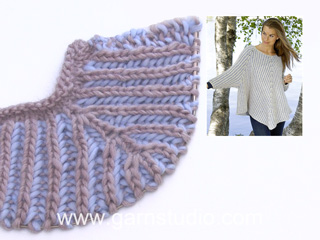
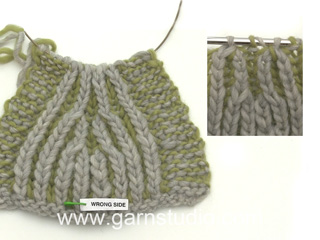





















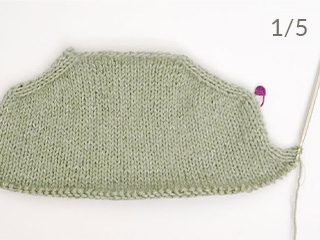
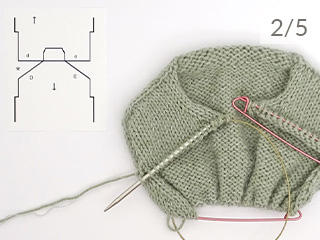
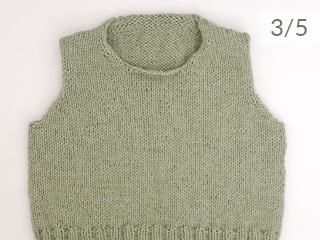
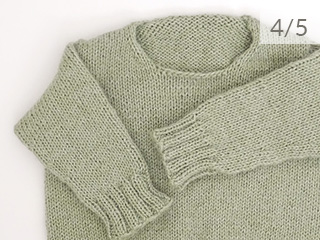
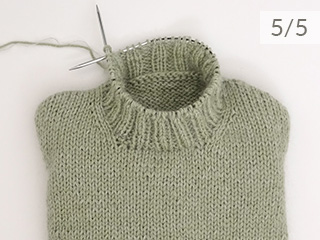




















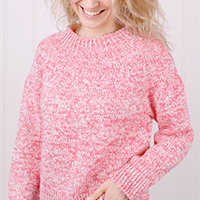

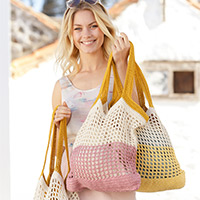

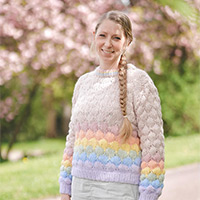
Comments / Questions (13)
De fout van de averechts naald is nog steeds niet herstellen.
02.11.2023 - 12:30Voor het samenvoegen van de voorpanden wordt op de verkeerde kant een naald averecht gebreid. Bij het verder breien in patentsteek ontstaat er een lelijke rand. Klopt deze naald averecht wel?
20.09.2023 - 07:43DROPS Design answered:
Dag Jacqueline,
Dat lijkt inderdaad niet te kloppen. Ik denk dat er moet staat dat je 1 naald aan de verkeerde kant breit, maar niet averecht. Ik zal het navragen, zodat er een correctie kan komen.
20.09.2023 - 19:56Autumn thoughts
06.08.2023 - 17:42Autumn Break
06.08.2023 - 11:31Mint spring
06.08.2023 - 10:16Autumn due
05.08.2023 - 21:34Game Night
05.08.2023 - 04:26Sea breeze
04.08.2023 - 23:50Höstens vardagsfavorit
04.08.2023 - 11:27Not a Patricia but definitely Baltic! 👌
04.08.2023 - 11:01